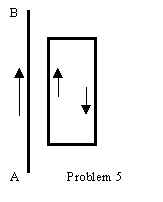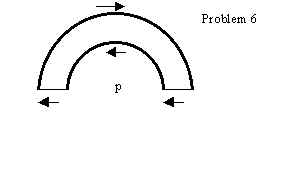
Workshop module 5 - Physics 114, Spring 2000
1: Batteries are always labeled with their emf; for instance, a AA flashlight battery is labeled "1.5 volts." Would it also be appropriate to put a label on batteries stating how much current they provide? Why or why not?
2: A parallel-plate capacitor has the space between the plates filled with two slabs of dielectric, one with constant K1 and one with constant K2. Each slab has thickness d/2, where d is the plate separation. Show the capacitance is


3: Sharks can detect electric fields as weak as 1 microvolt/meter, which is in the range of the elctric fields found along the skins of animals (in particular … fish the shark wants to eat!). The organs that can detect such weak fields are called the ampullae of Lorenzini. These are jelly-filled tubes that are many centimeters long but only a millimeter or two in diameter. One end of the tube opens at the surface of the shark's head. The walls of the tubes have high resistivity, but the resistivity of the jelly is quite low. How do you suppose the ampullae of Lorenzini function?
4: The current in a wire varies with time according to the relation I= 3.0 A + (0.73 A/S2))t2. a) How many coulombs of charge pass a cross section of the wire in the time interval between t=0 and t=10 s? b) What constant current would transport the same charge in the same time interval?
5: The energy that can be extracted from a storage battery is always less than the energy that goes into it while it is being charged. Why?
6: When the switch in the diagram below is open, the voltmeter V reads 1.56 V. When the switch is closed, the voltmeter reading drops to 1.45 V, and the ammeter A reads 1.3 A. Found the emf and internal resistance of the battery. Assume that the two meters are ideal, so they don't affect the circuit.
I had technical problems getting this figure to come through on the web page. ... please refer to figure 26-29 on page 826 of the text.
7:
You have a friend who recently bought an electrical space heater for his dorm room. The heater is rated at 1000 Watts and is designed to operate on a 240 volt circuit. Unfortunately for your friend, his dorm room is only equipped with 120 volt outlets. For this problem, assume these voltages are direct current (dc) rather than alternating current.(a) What is the resistance of the space heater?
(b) If your friend goes ahead an plugs it into an outlet in his dorm room, what power output (dissipated as heat) will he get from his heater?